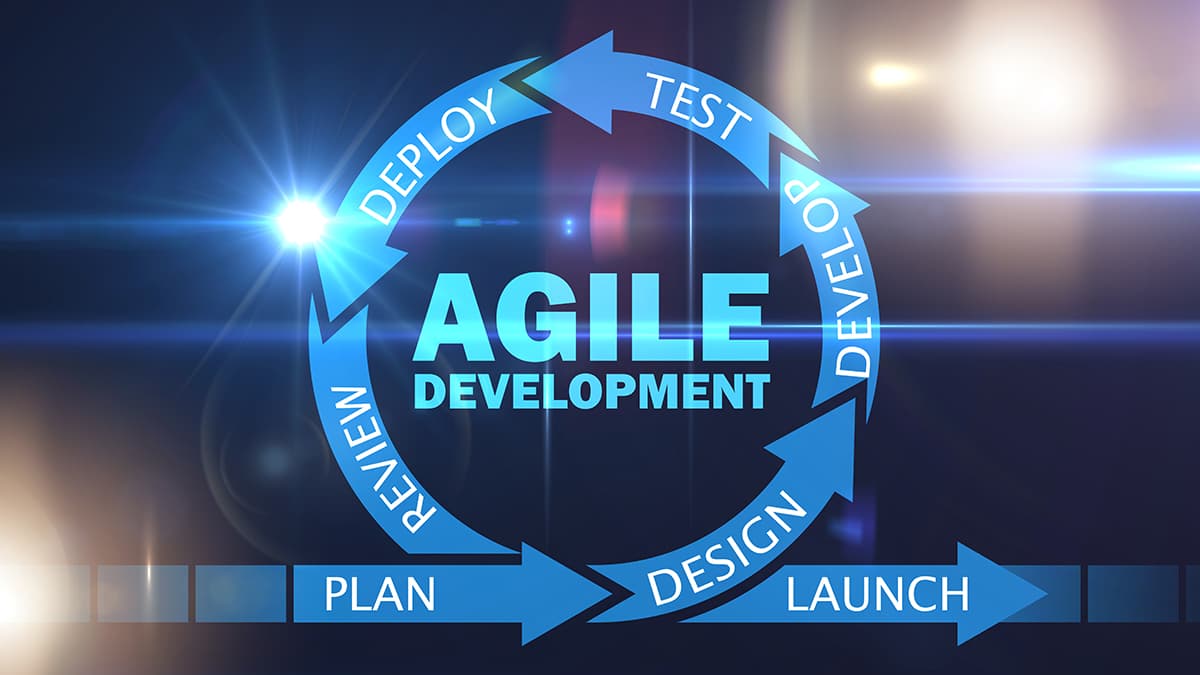
Agile development has revolutionized software creation. But Agile's story extends far beyond its initial surge in popularity. It is a story of constant adaptation, continuously evolving to meet the ever-changing demands of the business world.
In the not-so-distant past, software development resembled a rigid, step-by-step process often referred to as the waterfall approach. Imagine a cascading waterfall – each stage feeding into the next with little room for adjustment. This method struggled to keep pace with the dynamic nature of modern markets, where customer needs and expectations can shift rapidly.
The statistics speak for themselves. According to a 2023 statistics by Tech Report, a whopping 71% of software development companies in the USA have adopted at least some agile practices. This widespread adoption is a clear sign that Agile's core principles resonate with the needs of modern businesses.
Why the Waterfall Farewell?
The waterfall approach, while seemingly straightforward, presented several challenges:
- Inflexibility: Firstly, it lacked the ability to change. Adapting to new requirements or modifications midway through the process was difficult and expensive, often requiring redoing entire phases.
- Slow Delivery: Secondly, it led to slow delivery. Functional software was not delivered until the later stages of the project, leaving limited time for feedback and course correction.
- Poor Communication: Last but not the least, waterfall often resulted in poor communication, creating silos between developers, product owners, and stakeholders.
These limitations stifled innovation and made it difficult for businesses to keep pace with the evolving market.
Enter Agile: A Manifesto for Change
Agile development emerged in the early 2000s as a response to the shortcomings of waterfall. It championed a new set of values and principles:
People over Process: Agile prioritizes the expertise and collaboration of the development team over rigid methodologies and fancy tools. Empowered teams are more creative and productive.
Working Software over Documentation: While documentation is essential, Agile values delivering functional software in short cycles over creating extensive documentation upfront. This allows for faster feedback and course correction.
Customer Collaboration over Contract Negotiation: Agile thrives on continuous collaboration with customers to ensure the product meets their needs. User stories and feedback sessions are key tools for achieving this.
Responding to Change over Following a Plan: Agile development embraces change as inevitable. Teams can adapt their plans as new information arises or customer needs evolve. This allows for a more iterative and responsive approach to development.
Agile's focus on continuous testing and feedback loops yields several benefits. This iterative approach ensures higher-quality software, keeps developers productive with clear goals in short sprints, and fosters a collaborative environment that boosts morale and empowers teams. The following explains everything:
- Improved Quality: Agile's focus on continuous testing and feedback loops helps ensure higher-quality software by identifying and fixing bugs early in the development process.
- Increased Productivity: Smaller, more focused sprints help developers stay motivated and productive by giving them clear goals and a sense of accomplishment.
- Enhanced Morale: Agile fosters a collaborative environment where team members feel empowered and valued for contributing their expertise. This leads to higher morale and job satisfaction.
Agile's Ongoing Evolution: A Journey, Not a Destination
_1713959665.jpeg)
Agile isn't a static set of rules; it's a mindset. As the business landscape continues to evolve worldwide, agile methodologies evolve alongside it
- Remote-Friendly Adaptations: The rise of remote work has led to adjustments in practices that previously relied on face-to-face interaction.
- New Techniques: Concepts like design thinking and "jobs-to-be-done" (focusing on the tasks users try to accomplish) inform agile methodologies for a more user-centric approach.
- Scaling Frameworks: For large organizations navigating complex projects, scaling frameworks like SAFe (Scaled Agile Framework) provide guidance on implementing agile practices effectively.
- The Future with Technology: Artificial intelligence and machine learning have the potential to both complement and challenge agile teams, requiring further adaptation to stay ahead of the curve.
The Agile Advantage: A Foundation for Success
At its core, agile development's core principles remain strong: flexibility, collaboration, and responsiveness to change. As the business world continues its relentless march forward, agile methodologies will undoubtedly continue to adapt and play a vital role in the success of software development ventures.
Want to start a project?
Get your Free ConsultationOur Recent Blog Posts

© 2025 CSM Tech Americas All Rights Reserved
























































































































